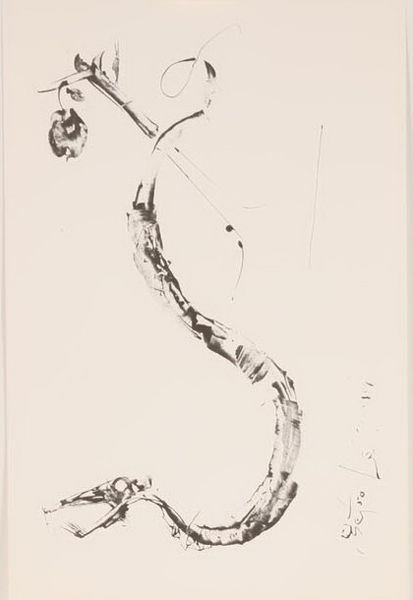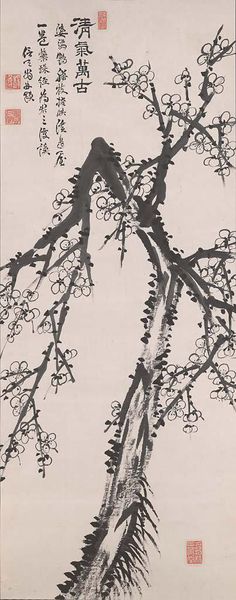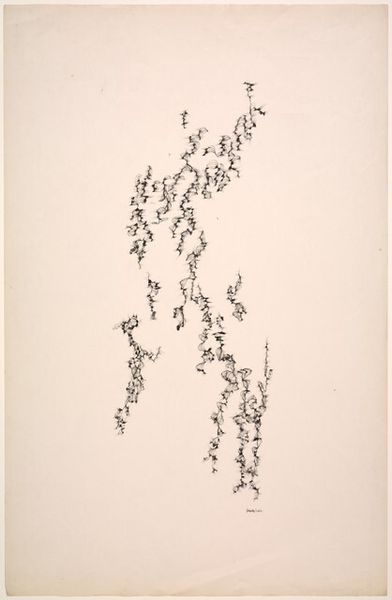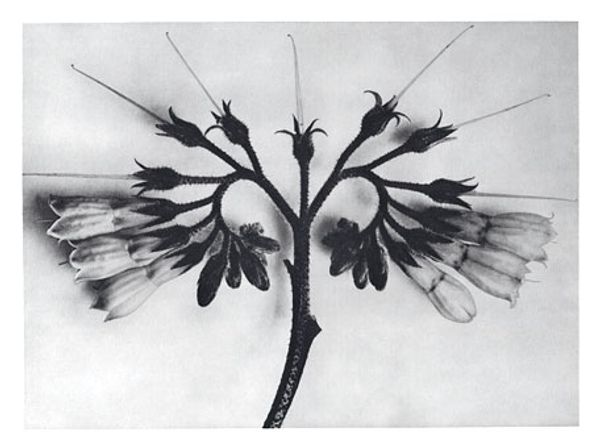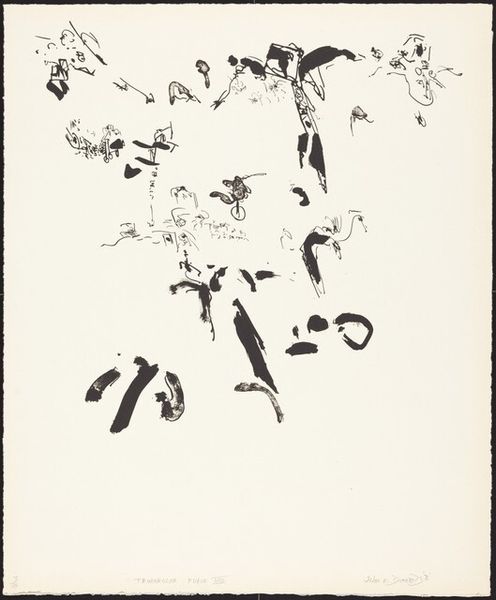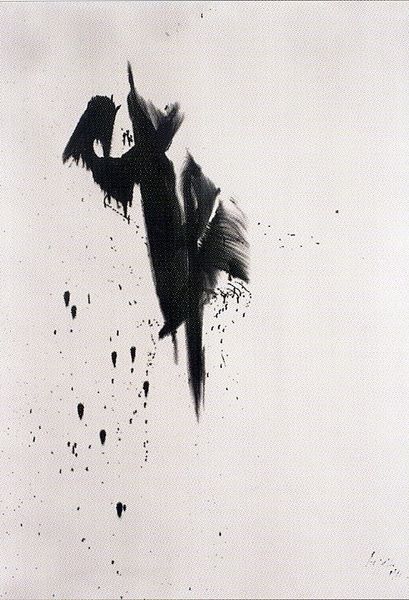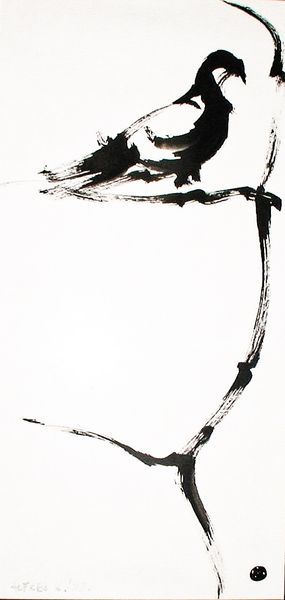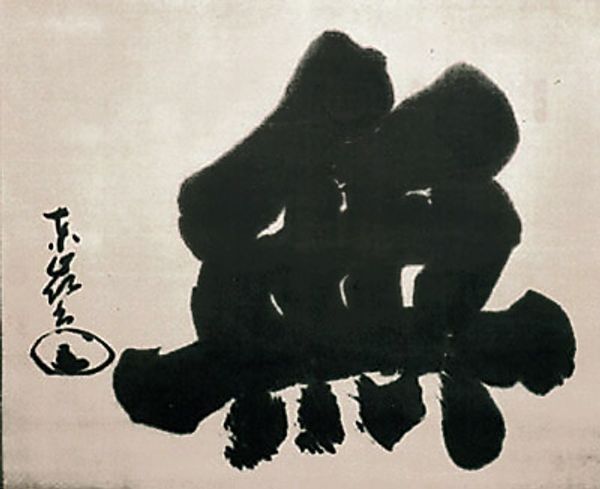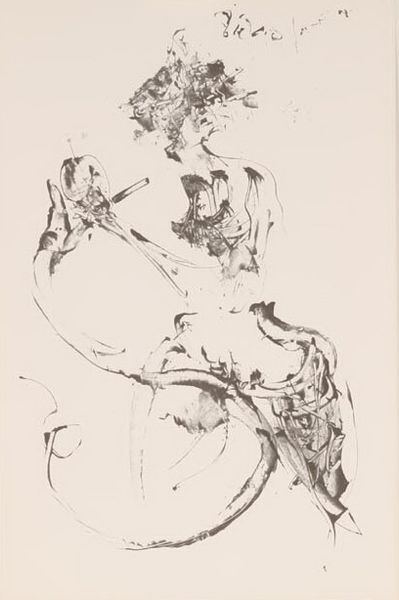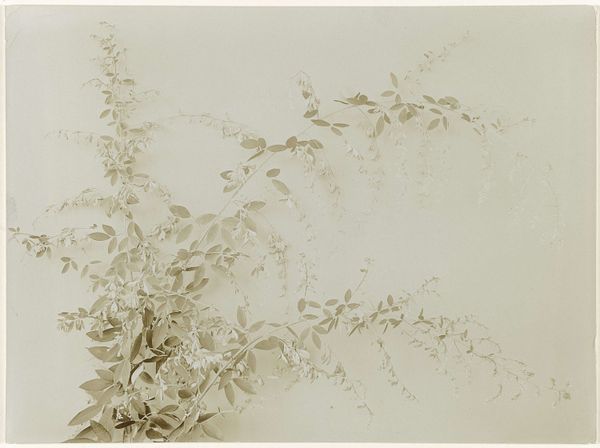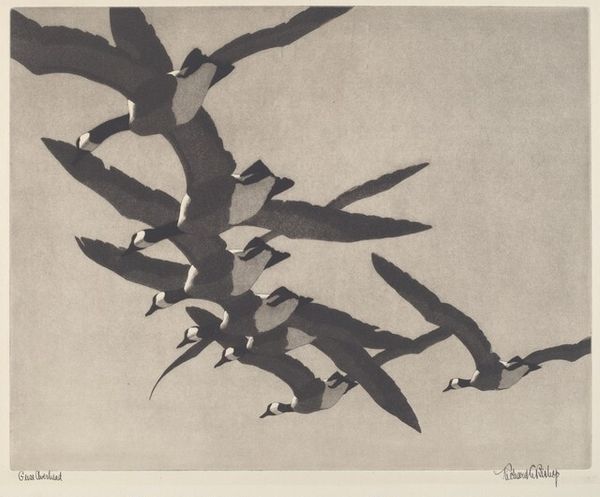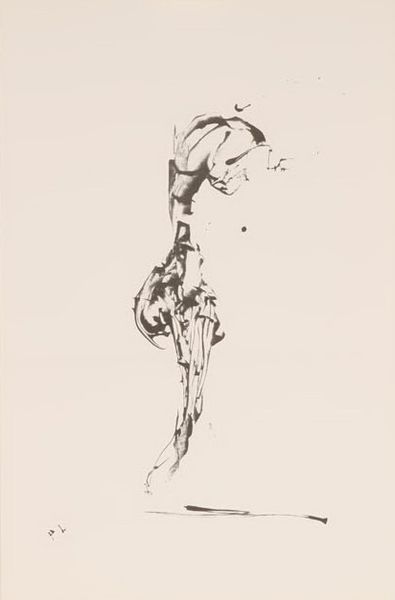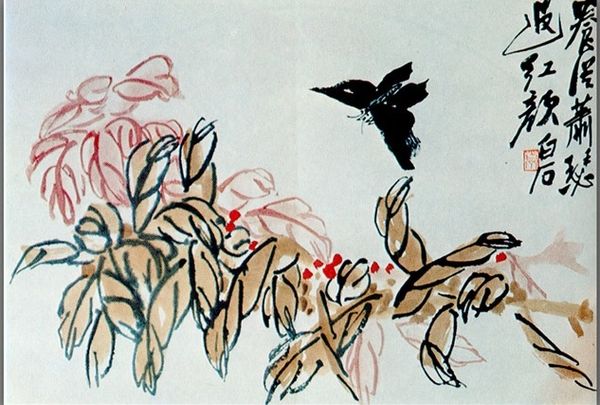
drawing, tempera, ink
#
drawing
#
tempera
#
asian-art
#
ink
#
orientalism
#
line
#
calligraphy
Copyright: Public domain
Editor: We're looking at "Chrysantheme," a tempera and ink drawing from 1692 by Bada Shanren. The simplicity of the lone chrysanthemum stem against all that negative space feels very…deliberate. How do you interpret this work, given its historical context? Curator: This "deliberateness" is key. Shanren painted this during a period of immense social upheaval, after the fall of the Ming dynasty. As a Ming royal, he was forced to live as a monk, assuming new names and identities. Does that historical trauma and forced reinvention inform how we might see that lone stem? Editor: It definitely adds a layer. It makes me think of resilience, perhaps? A single, strong flower persisting. Curator: Precisely. Consider also the tradition of scholar-artists. The chrysanthemum in particular represents the scholar-recluse, one who withdraws from public life, often as an act of resistance or protest against the ruling powers. How does understanding that code shape your reading? Editor: So, it's not just about personal resilience, but also a quiet resistance against the new Qing dynasty? The emptiness around the stem speaks to that withdrawal from society? Curator: Exactly. Think of the ink itself—a medium closely tied to calligraphy, to the written word, to power and tradition. This simple flower becomes a radical statement when considering the burden of Shanren’s identity and his response to a society overturned. Editor: That's fascinating. I hadn't considered the chrysanthemum as an act of political defiance, more of a personal reflection. Curator: The personal IS political! By understanding the intersection of biography, social context, and artistic tradition, the work reveals hidden depths. It asks us to question not just what we see, but *why* we see it. Editor: This reframes the entire work for me. I am really glad to know of the cultural contexts. Curator: Yes. By exploring art with all its historical context, we better understand ourselves, each other, and how even a single flower can shout resistance.
Comments
No comments
Be the first to comment and join the conversation on the ultimate creative platform.
